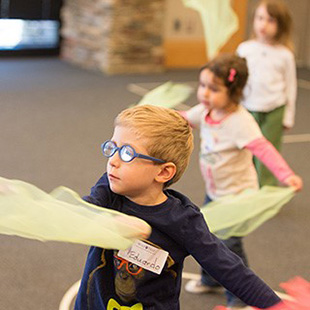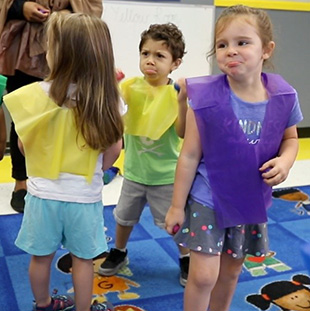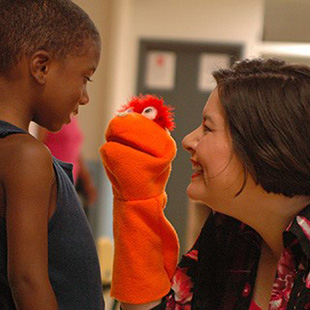Arts integration unlocks joyful, active learning for our youngest children. Singing, dancing, role-playing, and storytelling help children develop foundational skills in math, science, and literacy.
Wolf Trap Institute for Early Learning Through the Arts has more than 40 years of experience in arts integration for early childhood education. Wolf Trap Teaching Artists provide educators with hands-on ways to incorporate the arts into daily teaching practices.
Lesson plans, videos, and more examples of Wolf Trap’s approach to arts integration in the classroom can be found on our free online platform.

Dance brings abstract science concepts to life
Dance can help young learners begin to explore early science and engineering concepts. For example, based on the story The Three Little Pigs, children move their bodies to become strong and rigid like bricks, or thin and feeble like straw. As they prepare for the Big Bad Wolf’s mighty huffs and puffs, they internalize the concepts of mass and weight.

Drama encourages empathy
Through role-playing, young children take on the bodies and voices of characters and practice acting out perspectives other than their own—an exercise that fosters empathy. By having students act out Goldilocks and the Three Bears, teachers can ask their students to consider how Baby Bear feels when Goldilocks eats his porridge and what he might say when he sees his empty bowl.

Music builds a foundation for math skills
Early childhood educators and their students can use music to recognize and recreate patterns. In a song about farm animals, for example, teachers alternate making short and long animal sounds in a rhythmic pattern. Students repeat the teacher’s pattern and then create their own. Confidence in understanding and applying patterns supports future math skills, such as counting and multiplication.

Puppetry supports early literacy
Incorporating puppetry and dance into an alphabet lesson can help students see how shapes translate into letters. Using a puppet, educators can demonstrate straight and curvy lines and ask the children to mirror the shapes with their own bodies. By dancing with the puppet, children establish a more meaningful understanding of letters and symbols—foundations for early literacy.